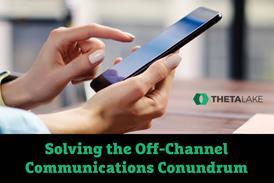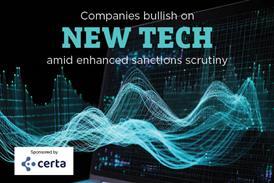Recent pronouncements from the National Labor Relations Board regarding social media have put years of conventional wisdom to the test. Companies that impose standards on what employees say about their business, bosses, and co-workers—especially when using company resources to do so—will need to revisit those policies and hunt, word-by-word, for prohibitions that might draw a challenge. Some may want to reconsider whether to have these policies at all.
At issue is the NLRB’s concern that restricting how employees use social media, on or off the clock, could restrict their ability to organize or discuss workplace concerns.
Recent opinions “have caught many by surprise and are counter-intuitive,” says Richard Rabin, head of the New York labor and employment group at law firm Akin Gump. “You have NLRB decisions throwing out policies that require employees to treat each other with courtesy and respect, because some protected activity may not always be viewed as respectful. Broad confidentiality provisions could be read as preventing employees from discussing the terms and conditions of employment.” Non-disparagement provisions, bans on speaking with the media, and restrictions on the use of an employer trademark or logo are all policies that may no longer pass muster.
Section 7 of the National Labor Relations Act establishes that both union and non-union employees have the right to engage in “concerted activities for the purpose of collective bargaining or other mutual aid” without fear of company interference. A workplace requirement that employees secure permission from their employer prior to engaging in those activities is unlawful.
Fair enough, most in management would concede. But the ubiquity of social media sites such as Facebook and Twitter has turned the employee break room into a global forum, often open to public view. Companies looking to protect their brand with restrictive social media policies are discovering that what they draft for those forums can be interpreted as restricting worker communications.
“What the NLRB decisions really point to is that they don’t want employers promulgating vague and broad policies that purport to cover a wide range of activities where an employee might think they shouldn’t discus employment matters with another employee.”
Alexander Nestor, Partner, Allen Matkins
Among the NLRB’s decisions last year regarding social media:
A decision on Triple Play Sports Bar and Grille, a non-union eatery in Connecticut, struck down a policy barring online discussions of confidential and proprietary information and “inappropriate discussions about the company, management, and co-workers.” The matter came to the NLRB’s attention after an employee was fired because he and several coworkers took to Facebook to lament payroll practices and took the opportunity to malign the owner using profanity. Even with bad language involved, the business had no right to fire the worker, the NLRB said, adding that employees who like a Facebook post should also view that thumbs-up icon as protected speech.
A December ruling involving Purple Communications, a provider of sign language interpreter services, overturned the NLRB’s own 2007 policy prohibiting the use of company e-mail for personal use. Unless a company has an acceptable reason to ban all personal use of company e-mail, a 3-2 decision of the board said, employees can use those addresses and servers for those discussions. Companies are still allowed to restrict those communications to non-working hours.
A memo from the NLRB’s Division of Advice said that provisions in Georgia-based U.S. Security Associate’s employee handbook and social media policy violated employee rights by requiring that anyone identifying himself as an employee in online forums include a prominent disclaimer that opinions are his own and not those of the company. The same memorandum, which could be the basis for future rulings, suggested that company policies against the sharing of “sensitive, proprietary, confidential, or financial information” or material that might be “embarrassing” to another person may also be impermissible.
A ruling against Phillips 66 could strip many companies of their ability to prohibit unauthorized employees from speaking to the media. An administrative proceeding found the company’s media policy to be overly broad and could limit labor-related discussions, whether or not those discussions actually involved a member of the media.
The Purple Communications decision could set the stage for broader decisions regarding all use of internal electronic platforms, from website forums to instant messaging, says Philip Gordon, head of the privacy practice at law firm Littler Mendelson. Drawing distinctions between company resources and “working hours” becomes even murkier when employees take advantage of bring-your-own-device policies.
The takeaway for companies: Review your social media policy and state any prohibitions as clearly as possible. “When crafting social media policies, many took the approach of being over-inclusive in how they phrased things to cover any possible scenario,” says Alexander Nestor, a partner with the law firm Allen Matkins. “What the NLRB decisions point to is that they don’t want employers promulgating vague and broad policies that purport to cover a wide range of activities, if an employee might think they shouldn’t discuss employment matters with another employee.”
A word-by-word review of policies is a smart idea, says Bill Nolan, a partner at law firm Barnes & Thornburg. “The NLRB is reading seemingly harmless words as limiting what employees can say about the terms and conditions of their employment,” he says. “It is legal gamesmanship the NLRB is engaging in here with how you interpret certain words.”
NOTABLE NLRB SOCIAL MEDIA CASES
The following are other notable decisions by the National Labor Relations Board regarding social media policies:
Lily Transportation, a carrier that delivers goods to Whole Foods distribution centers in New England, saw its employee handbook successfully challenged. It advised employees to “refrain from posting information or comments about Lily, Lily's clients, Lily's employees or employees' work that have not been approved by Lily on the internet, including but not limited to blogs, message boards, and websites.” Violators were threatened with termination. The board’s ruling was that the prohibition was too broad and employees could view it as restricting their right to discuss wages or terms and conditions of employment.
Hoot Winc and Ontario Wings, doing business as Hooters of Ontario Mills, were found in violation of the National Labor Relations Act when the California-based restaurant fired an employee for posting derogatory comments about co-workers and management. At issue was a policy issue to define such terms as “insubordination” and “lack of respect.”
A decision in a case against Durham School Services took aim at a policy the school bus operator had in place that prohibited employees from publicly sharing information related to the company, its employees, and customers. The policy was found to be “unreasonably broad and vague” and could be seen as restricting employees from freely communicating with each other regarding work issues.
In a case that went against Professional Electrical Contractors of Connecticut, the board took aim at a policy prohibiting the “distribution of chain letters” and messages, sent either on- or off-duty, that could negatively affect company business interests. The policy language was deemed to be overly-broad.
Source: NLRB.
A defective policy is one that is devoid of any specific examples, says Peter Kirsanow, a partner with the law firm Benesch and a former NLRB member. “You have to be very specific about the kinds of communications that are prohibited and give examples.”
That doesn’t preclude an employer from having a social media policy that prohibits certain types of posts or e-mails; nor does it mean scrapping past efforts, as much as building upon them. “The general language of a social media policy is almost by necessity going to be ambiguous and generalized,” Kirsanow says. “Employers still have the right to prohibit the disclosure of certain confidential and proprietary information, their trade secrets, and they have fairly broad latitude prohibiting workplace harassment, threats, and bullying. But it is important to provide examples to give employees some guidance on what the policy is intended to prohibit and permit.”
Be wary of including conditions and caveats in the social media policy, Kirsanow says. “Everyone has been including a clause saying that nothing in the policy should be construed as precluding employees from discussing wages, hours, or terms and conditions of employment,” he says. “That is not sufficient anymore. Simply having that clause, even a fairly specific one that is in plain English, is not enough to protect an otherwise defective policy.”
Companies should review social media policies frequently and incorporate whatever is to their advantage from NLRB decisions, Gordon says. For example, the Triple Play decision did establish a standard for egregious employee speech that is in line with the malice standard recognized in libel cases. Yes, that standard sets a high bar, but companies can act upon statements that are knowingly false or display “reckless disregard for the truth.”
Companies may also want to consider even whether to have a social media policy, Rabin says. The underlying theme of the NLRB’s current approach is whether a policy (on its own or in a code of conduct or employee handbook) could chill protected activity. “When you look at most policies, you could arguably find something in there that violates that,” he says.
“At the start of 2014, I would have said that every company should have a social media policy,” Rabin says. “I’m not sure we haven’t reached a tipping point. If these cases are notable for what you cannot do or say, and there are so many caveats needed when drafting a policy to ensure that the NLRB finds it lawful, a company has to think long and hard about whether they want to have a policy at all.”












No comments yet